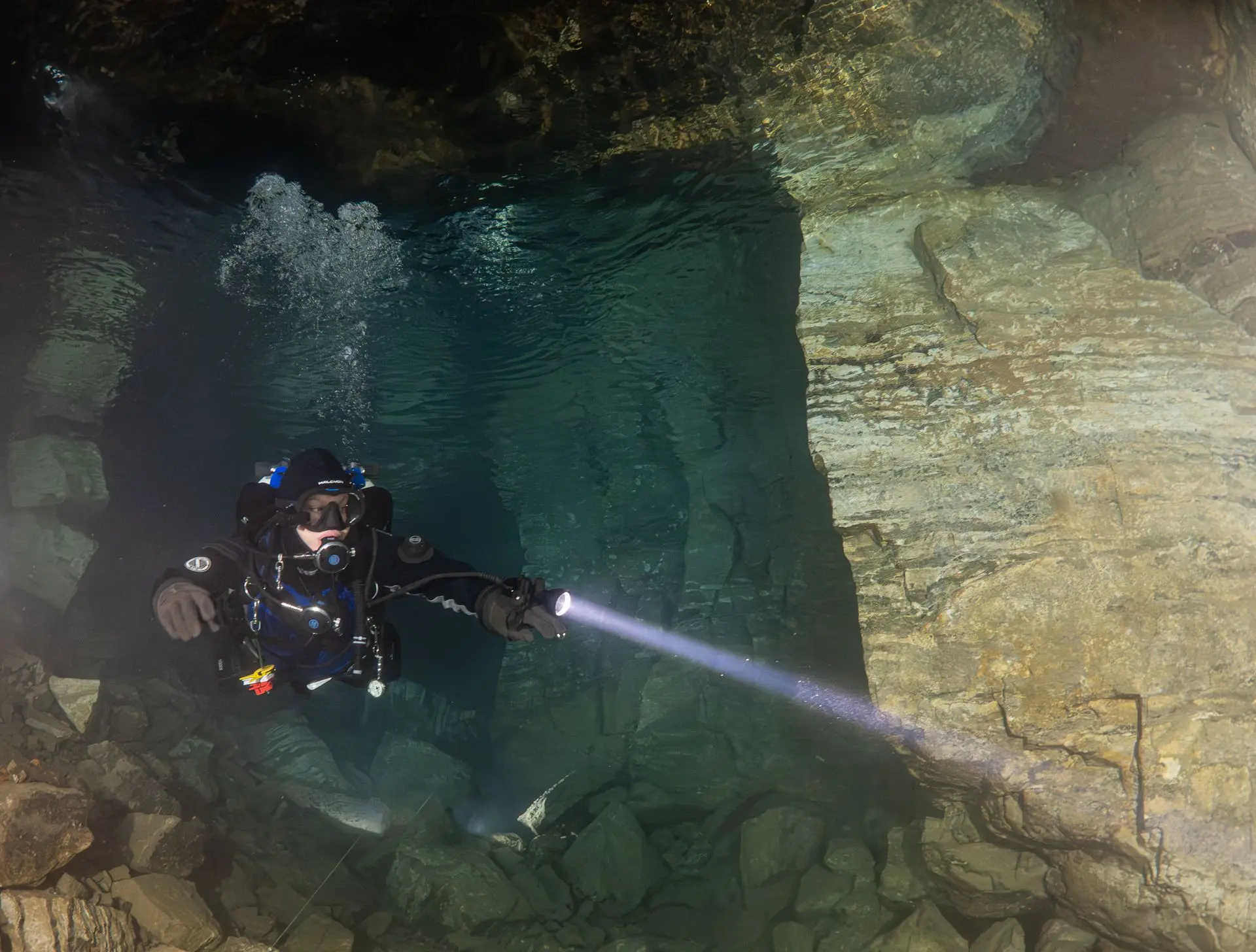Beneath the hills of the Peak District near Bakewell, Holme Bank Chert Mine stands as an important industrial landmark. Once central to Derbyshire’s chert industry, its now-flooded tunnels preserve the legacy of those who worked there and provide advanced divers with a rare chance to explore history firsthand.

One of the flooded tunnels |Photo: Marcin Pawelczyk | Holme Bank Chert Mine
This submerged mine represents more than just a dive site—it serves as a preserved record of Britain's industrial past. With its excellent underwater visibility and intact artifacts, it provides valuable learning opportunities for those with appropriate qualifications and training. This guide examines Holme Bank's history, its diving conditions, and the essential requirements for safe exploration.
The Industrial Legacy of Holme Bank
Holme Bank's history is connected to chert, a hard rock found in limestone beds. While used for tools in prehistoric times, its industrial significance emerged in the 18th century. The pottery industry required a pure grinding material for calcined flint, and chert proved to be the appropriate solution. In 1772, potter Josiah Wedgwood recognized Derbyshire chert for its hardness and purity, establishing it as a key material for producing high-quality pottery.
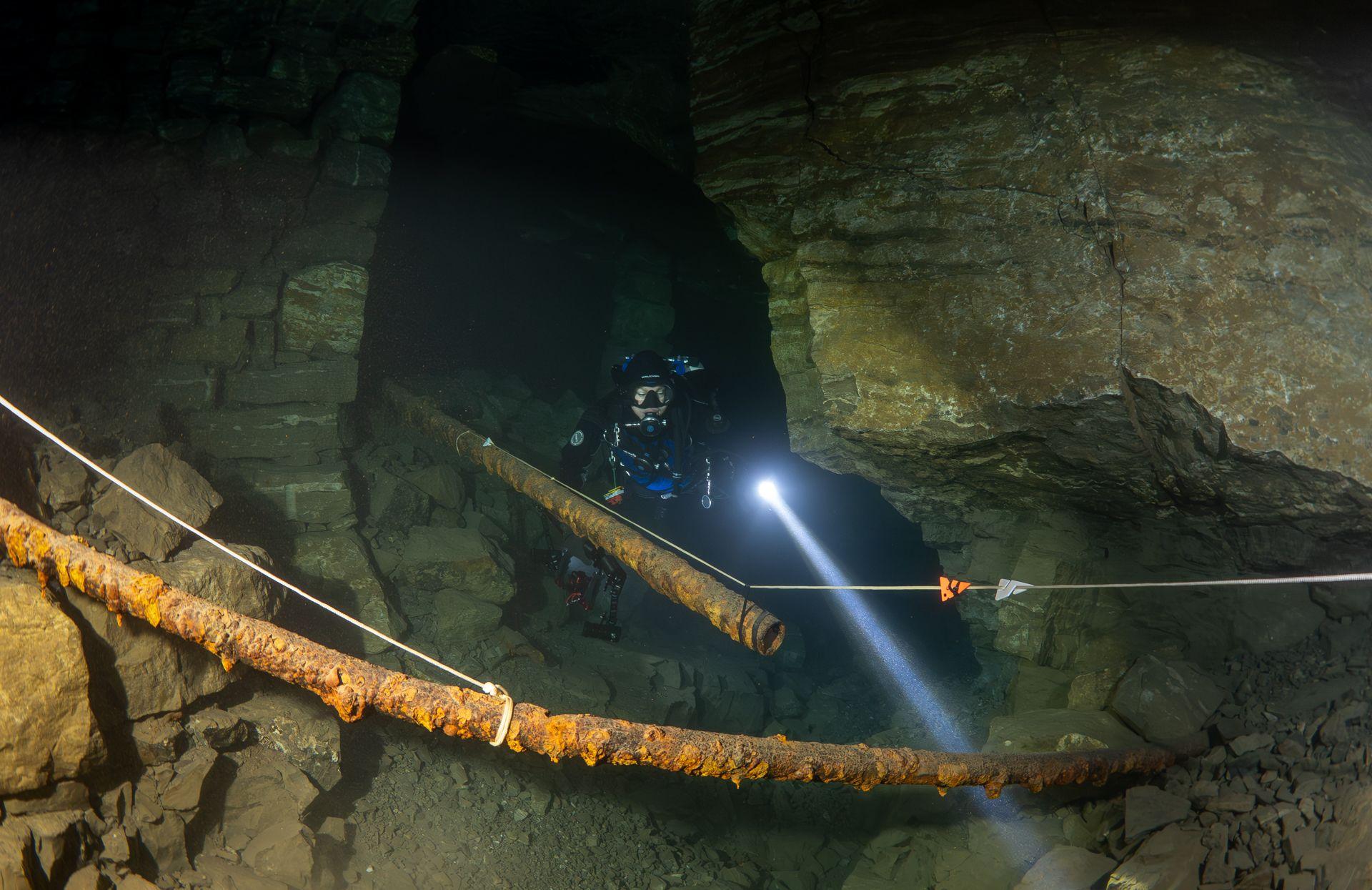
Remains of the water pump system | Photo: Marcin Pawelczyk | Holme Bank Chert MIne
Chert mining developed into a substantial industry at Holme Bank, which began commercial operations in 1867. For nearly a century, miners extracted blocks of chert, transported by road, canal, and rail to Staffordshire's potteries. However, technological advances and reduced demand resulted in the mine's closure in 1960. Without maintenance, the water pumps wore shut down - the lower levels flooded, preserving tools, machinery, and workspaces in good condition.
Exploring Holme Bank: A Technical Diving Environment
For qualified divers, Holme Bank provides an opportunity to observe preserved industrial history. The descent through its dry upper levels, lined with stone walls and timber supports, leads to the flooded sections where careful exploration is required.
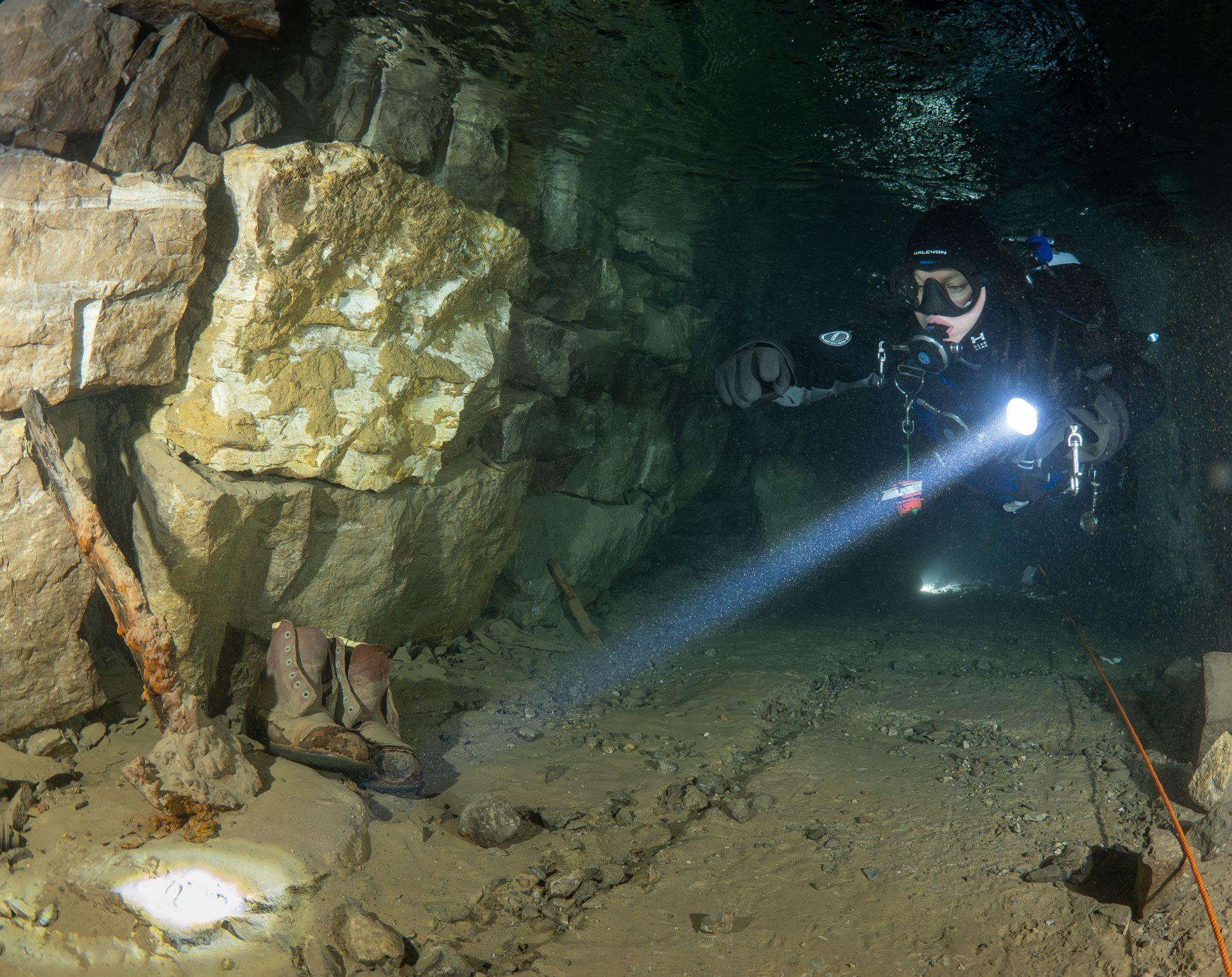
Artifacts remaining in the mine. | Photo: Marcin Pawelczyk
Underwater Conditions and Visibility
Once submerged, divers encounter exceptionally clear water with excellent visibility suitable for navigation and documentation. The water temperature, typically around 8°C (46°F), requires appropriate thermal protection. Fixed lines guide through the tunnels, supporting safe navigation for certified cave (mine) divers.
Key Features and Technical Requirements
The dive leads through narrow passages and into large galleries supported by stone pillars. Significant locations, such as Pump Base, contain remnants of the mine's operations, including pipework and machinery. Divers observe tools, rails, and equipment left behind decades ago.
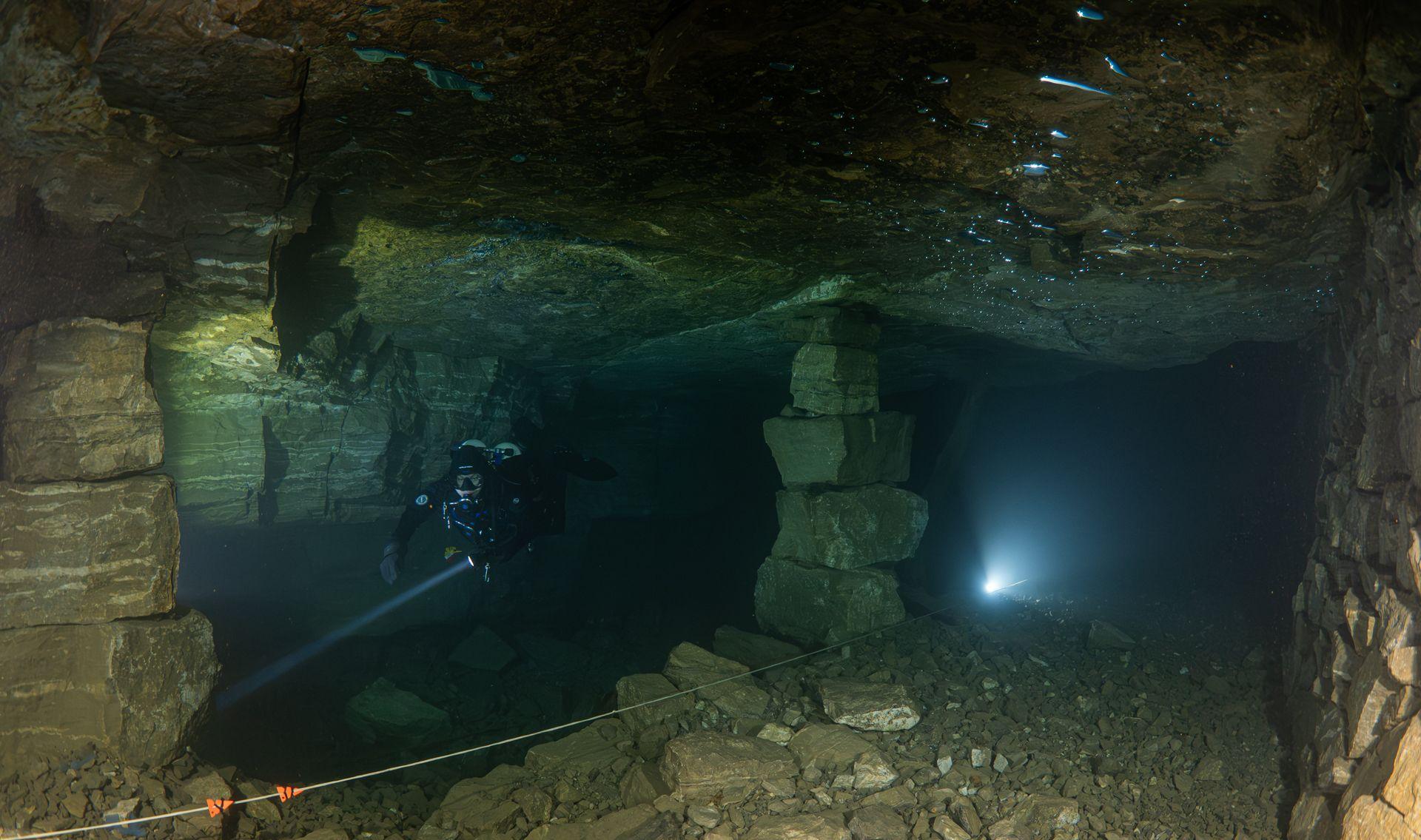
Photo: Marcin Pawelczyk | Holme Bank Chert mine UK
Diving here requires specialized training and equipment. The overhead environment necessitates cave or mine diving certifications, precise buoyancy control, and experience in confined spaces. Silt disturbance must be minimized to preserve the site's condition and maintain visibility for all divers.
Documentation Opportunities
Holme Bank offers significant opportunities for underwater documentation. The combination of industrial heritage and clear water conditions enables detailed recording of artifacts and structures. Proper lighting reveals tools, winches, resting undisturbed, while the architecture of archways and rock formations provides historical context. Each artifact represents the working conditions and lives of the miners who operated here.
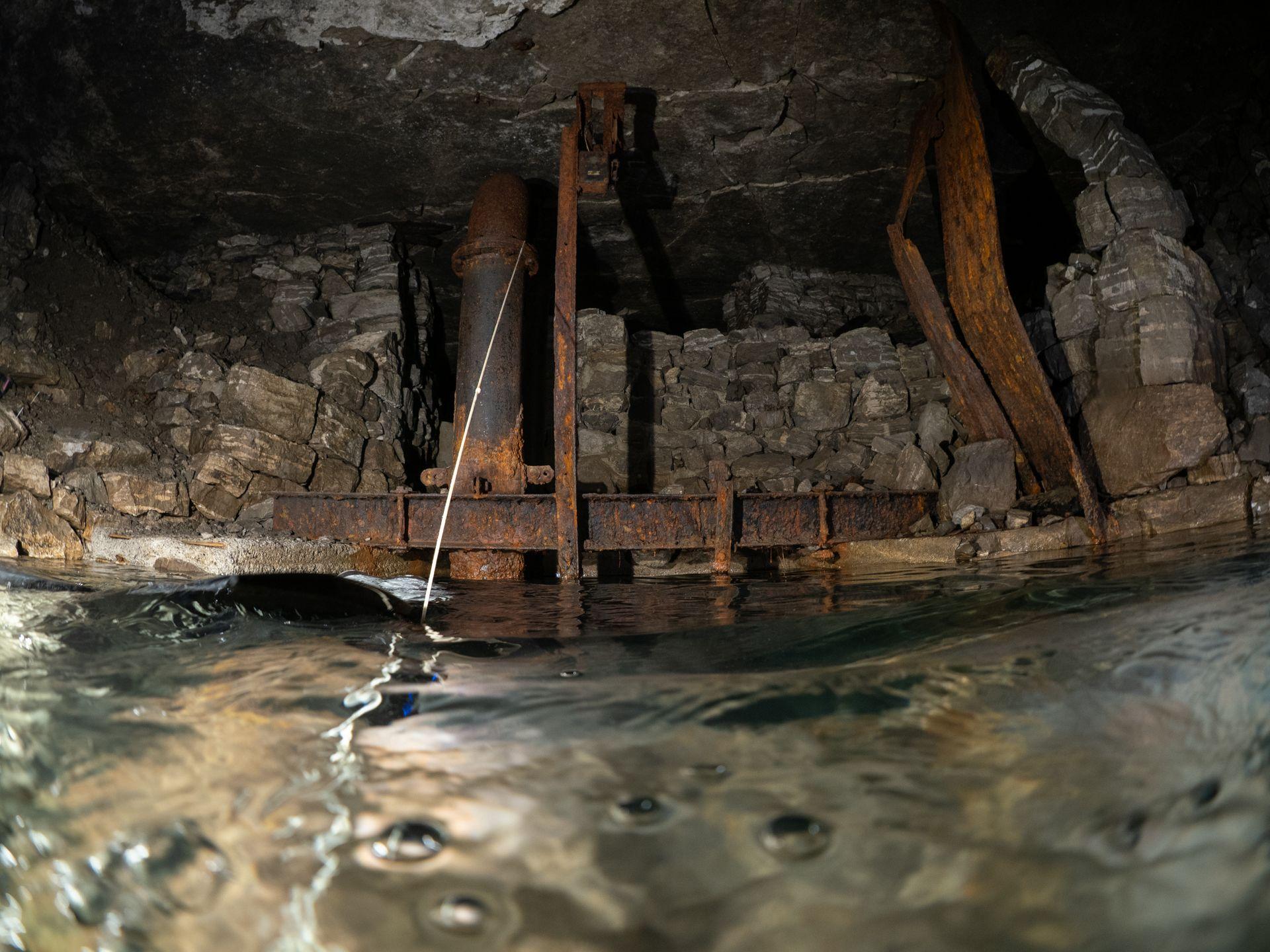
Remains of the water pump system. | Photo: Marcin Pawelczyk
Planning Your Dive: Access and Requirements
Access to Holme Bank Chert Mine requires careful preparation, as it is located on private land and demands appropriate qualifications.
Permissions and Certifications
Divers must possess cave or mine diving qualifications and obtain permission from the landowner. Access is coordinated through organizations like the Derbyshire Caving Association, which provides information on current procedures and safety requirements.
Logistics
Entrance to the mine is through a secured gate, and booking is required. Divers must transport equipment through the dry upper levels to entry points like Pits Base or Pump Base. This requires physical preparation, so efficient equipment management and team coordination are essential. Ensure all necessary equipment is prepared beforehand, as returning to the surface for items creates unnecessary delays, and nobody likes to wait for a dive.
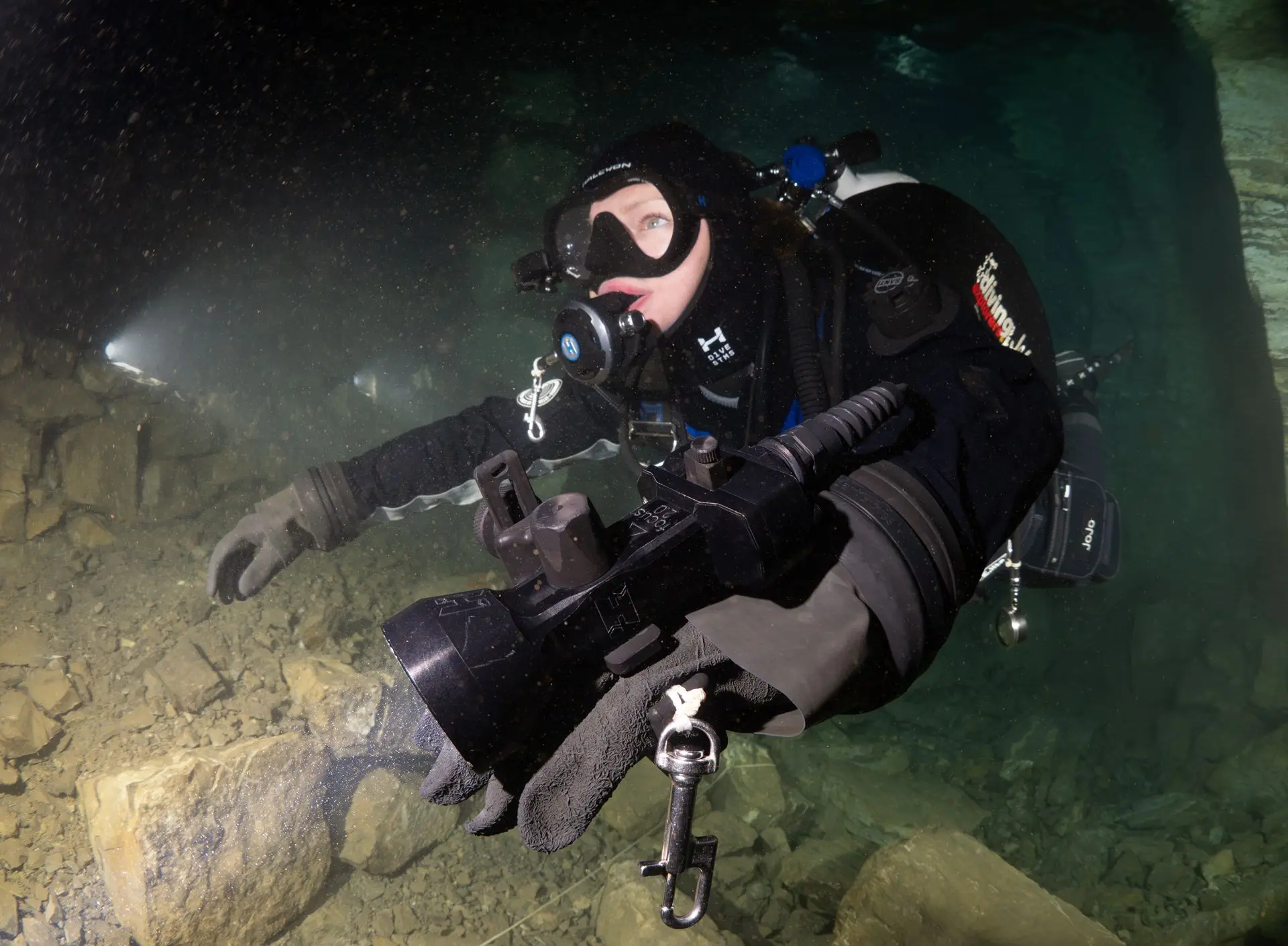
Photo: Marcin Pawelczyk
Dive Requiring Proper Preparation
Holme Bank Chert Mine provides an opportunity to observe Britain's industrial heritage in a preserved underwater environment. Diving into its clear, flooded tunnels offers educational value alongside technical challenge, providing insight into historical working conditions. For properly trained and certified divers, it represents a valuable learning experience that combines historical preservation, technical diving skills, and respect for industrial heritage.
Holme Bank Mine is the perfect place to introduce divers to an overhead environment, refine your skills, and capture stunning underwater photos.
Joanna "JoJo" Wyrebek
A cave diver and Full Trimix CCR specialist, Jojo was born in Poland and now resides permanently in...
